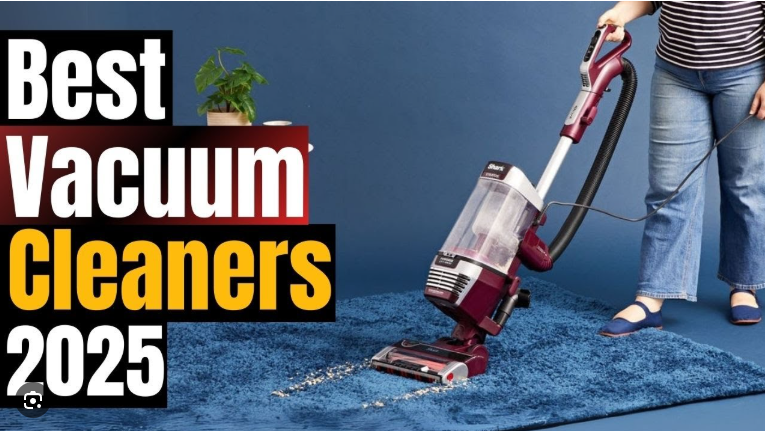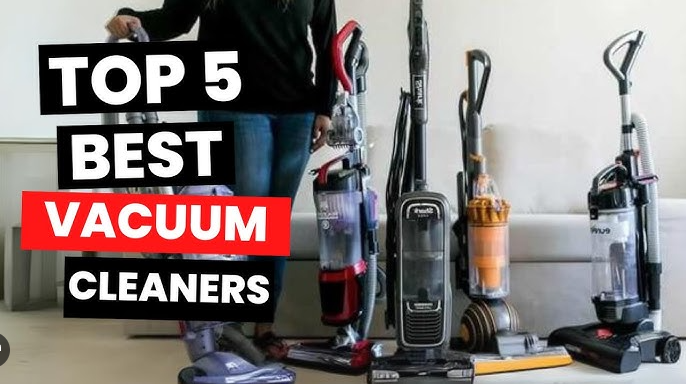A noisy vacuum cleaner can be frustrating, disrupting your household’s peace and signaling potential issues with your machine. Whether it’s a high-pitched whine, rattling, or loud humming, understanding why your vacuum cleaner is noisy is the first step to fixing it. In this comprehensive guide, we’ll explore common causes of vacuum noise, provide vacuum cleaner troubleshooting solutions, and share expert vacuum cleaner tips to restore quiet operation. From vacuum cleaner setup errors to maintenance oversights, we’ll help you keep your portable vacuum cleaner or other model running smoothly and silently.
Why Is My Vacuum Cleaner Noisy? Common Causes
A noisy vacuum cleaner often results from mechanical issues, blockages, or improper use. Identifying the root cause is key to addressing the problem effectively. Below, we outline the most common reasons your vacuum might be louder than usual and how to fix them, ensuring vacuum cleaner safety and performance.
Top Reasons Your Vacuum Cleaner Is Noisy
1. Clogged Hoses or Attachments
Cause: Debris, pet hair, or dust can accumulate in the hose, wand, or attachments, forcing the motor to work harder and produce loud noises like whining or grinding.
Solution:
- Unplug the vacuum for safety.
- Detach the hose and attachments; inspect for blockages.
- Use a broom handle or flexible rod to push out debris.
- Run water through washable hoses (if permitted by the manual) and let dry completely.
Tip: Regular vacuum cleaner maintenance prevents clogs. Check hoses weekly, especially in pet-heavy homes.
2. Full Dustbin or Bag
Cause: An overfilled dustbin or bag restricts airflow, causing the motor to strain and create a louder hum or whine.
Solution:
- Empty bagless dustbins after each use or when two-thirds full.
- Replace bags in bagged models when they reach 75% capacity.
- Clean the dustbin area to remove stuck-on debris.
Tip: For how to clean with a vacuum cleaner, always empty the bin before it’s full to maintain suction and reduce noise.

3. Dirty or Clogged Filters
Cause: Clogged filters (HEPA, foam, or mesh) reduce airflow, making the motor work harder and produce excessive noise.
Solution:
- Check filters (usually near the dustbin or motor).
- Rinse washable filters under lukewarm water; let dry for 24 hours.
- Replace non-washable filters every 6-12 months, per manufacturer guidelines.
Tip: Clean filters monthly as part of vacuum cleaner maintenance to keep your machine quiet and efficient.
4. Worn or Tangled Brush Roll
Cause: Hair, threads, or debris wrapped around the brush roll can cause rattling or grinding noises, especially in upright or stick vacuums.
Solution:
- Unplug the vacuum and access the brush roll (check the manual).
- Use scissors or a seam ripper to carefully cut away tangled hair or strings.
- Inspect the brush for wear; replace if bristles are frayed.
Tip: For pet owners, clean the brush roll weekly to prevent noise and maintain performance.
5. Damaged or Loose Parts
Cause: Loose screws, cracked housings, or worn belts can cause rattling, buzzing, or screeching sounds during operation.
Solution:
- Inspect the vacuum for loose parts; tighten screws with a screwdriver.
- Check belts in upright models; replace if stretched or cracked.
- Contact the manufacturer for replacement parts if cracks are found.
Tip: Regular inspections during vacuum cleaner maintenance can catch loose parts early.
6. Motor or Fan Issues
Cause: A worn-out motor or damaged fan blades can produce high-pitched whines or grinding noises, often indicating a serious issue.
Solution:
- Avoid using the vacuum to prevent further damage.
- Contact the manufacturer or a certified repair technician.
- Check warranty coverage for motor repairs (common in premium models).
Tip: Motors typically last 5-10 years with proper care; follow vacuum cleaner safety guidelines to avoid overloading.
7. Robot Vacuum-Specific Issues
Cause: Robot vacuums like iRobot Roombas can become noisy due to stuck wheels, tangled side brushes, or dirty sensors.
Solution:
- Clear debris from wheels and side brushes.
- Wipe sensors and cameras with a dry cloth to improve navigation.
- Reset the vacuum via the app if navigation errors persist.
Tip: For vacuum cleaner troubleshooting, check the app for error codes and follow prompts.
How to Prevent a Noisy Vacuum Cleaner
Preventing noise starts with proper use and care. Here are key vacuum cleaner tips to keep your machine quiet:
- Regular Cleaning: Empty dustbins, clean filters, and clear brushes after each use.
- Proper Setup: Ensure correct vacuum cleaner setup by following the manual or app instructions for smart models.
- Use Correct Settings: Adjust suction and brush height for floor types to avoid motor strain.
- Avoid Large Debris: Pick up coins, small toys, or sharp objects to prevent jams.
- Schedule Maintenance: Inspect hoses, belts, and parts monthly for wear.

Vacuum Cleaner Troubleshooting for Noisy Operation
If your vacuum remains noisy after basic checks, try these vacuum cleaner troubleshooting steps:
- Check Airflow Path: Inspect the entire airflow path (hose, wand, dustbin, filters) for hidden blockages.
- Test on Different Surfaces: Noise may vary by floor type; test on both carpet and hard floors.
- Reset Robot Vacuums: Restart via the app or power button to clear software glitches.
- Consult the Manual: Look for model-specific noise troubleshooting tips.
- Professional Service: If noise persists, contact a technician or the manufacturer.
Tip: For detailed vacuum cleaner troubleshooting, visit VacuumCleanerT for model-specific advice.
Vacuum Cleaner Safety Tips for Noise Reduction
Ensuring vacuum cleaner safety while addressing noise issues:
- Unplug Before Inspection: Always disconnect corded vacuums before checking for blockages or loose parts.
- Avoid Overloading: Don’t vacuum heavy debris that could strain the motor.
- Protect Hearing: If noise exceeds 80 dB (like some uprights), consider ear protection during extended use.
- Robot Vacuums: Ensure sensors are clean to prevent erratic movements that increase noise.
Vacuum Cleaner Maintenance to Keep It Quiet
Regular vacuum cleaner maintenance is crucial for preventing noise:
- Filters: Rinse washable filters monthly; replace non-washable ones every 6-12 months.
- Brushes: Clean brush rolls weekly to remove hair and debris.
- Dustbin/Bags: Empty bagless bins after each use; replace bags before overfilling.
- Hoses and Attachments: Inspect for cracks or blockages monthly.
- Robot Sensors: Wipe sensors and wheels biweekly to ensure smooth, quiet operation.
When to Seek Professional Help
If troubleshooting doesn’t resolve the noise, it may indicate a deeper issue:
- Persistent Grinding or Whining: Likely a motor or fan problem requiring professional repair.
- Warning Lights or Errors: Check the manual or app for error codes; contact support if unresolved.
- Warranty Coverage: Premium models often include 5-10 year motor warranties; check with the manufacturer.
Conclusion: Silence Your Noisy Vacuum Cleaner
Understanding why your vacuum cleaner is noisy allows you to address issues like clogs, dirty filters, or worn parts quickly. By following our vacuum cleaner troubleshooting steps and practicing regular vacuum cleaner maintenance, you can restore quiet operation and extend your machine’s lifespan. Whether you’re using a portable vacuum cleaner, upright, or robot model, proper care ensures efficient, silent cleaning. For more vacuum cleaner tips and detailed troubleshooting, explore our best vacuum cleaner guide at VacuumCleanerT today.